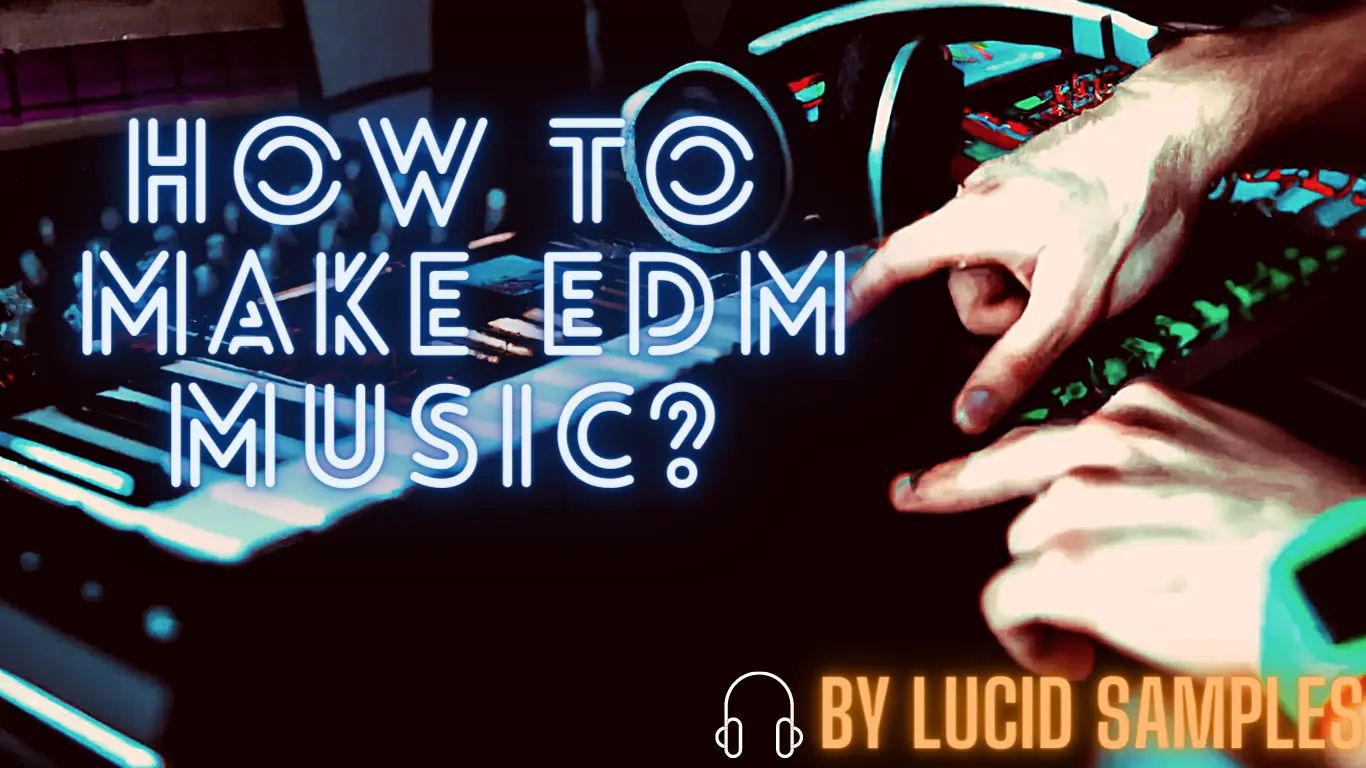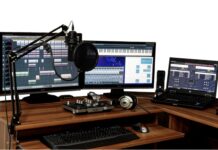Creating EDM music is a fun and rewarding experience that anyone can do with the right knowledge. Electronic Dance Music production involves learning the basics of music production, such as sound design and mixing techniques. It’s important to aim to create tracks that sound like those made by popular EDM artists like Major Lazer, Calvin Harris, and AVICII.
Every producer knows that the process of making EDM music is a challenging one. It requires patience and dedication to create something unique and enjoyable.
However, once you have mastered the basics of producing, you can make your own tracks that stand out from the rest.
Table of Contents
Initial stage to make EDM
Once you have your equipment and music production software ready to go, plenty of online resources are available for help if you’re having trouble with electronic music production. You can also reach out to local artists who may be willing to share tips and tricks if approached organically. However, being too pushy or demanding will likely result in unhelpful answers.
It can be difficult for those just starting out in EDM production to know where to begin. The first step is to decide which equipment, software, and platform you want to use.
The computer is the main instrument in Electronic Music Production
Producers rely on computer-based Digital Audio Workstations to create their music – combining various sounds into track forms and exporting them in audio formats like wav, aiff or mp3.
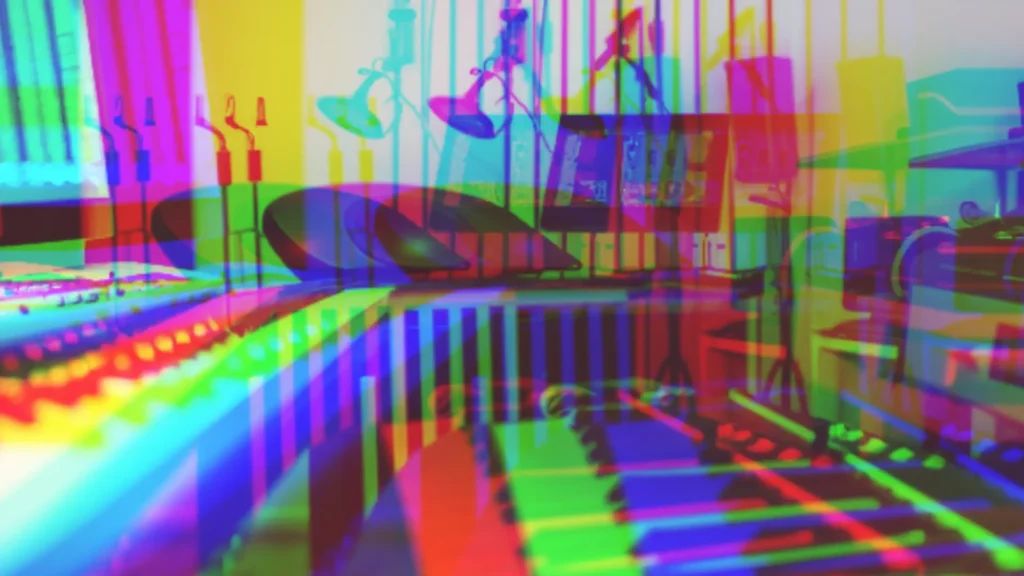
The computer has revolutionized the way that producers create music. Its powerful capabilities and user-friendly interface have allowed producers to create complex tracks without investing in expensive gear or renting out large studios.
The computer also allows more sound design and arrangement experimentation than ever before.
Hardware
When creating EDM , your hardware is just as important as the software.
It’s essential to choose a computer with enough RAM (16 GB or more), processor power (Intel i7 or AMD Ryzen 9), hard drive space and monitor size to handle your EDM music production needs.
Apple computers are often the preferred choice of many EDM artists due to their reliability and ease of use. Laptops are also popular with live show performers because they are more portable than desktops.
When selecting a computer platform for making electronic music, you must choose the one you already know. Having decent specs for your PC will help ensure that your music software runs smoothly and that you can build complex projects without any issues.
Consider getting a solid-state drive (SSD) for even faster performance. If you want to ensure your audio production system has all the necessary specs, consider buying a custom-built computer specifically designed for audio production.
What about Midi?
It is an essential technology for any music producer or musician. It stands for Musical Instrument Digital Interface, a standardized language that allows communication between electronic instruments and computers.
Using different software, you can translate the information from MIDI into sounds such as synths, beats, and glitches.
Before you start, you must have a solid understanding of MIDI.
Programs that synthesize sound and audio plugins
VST synthesizers and effects are essential for creating digital music with a computer. There are many free VST plugins available online, as well as paid options from stores like PluginBoutique.
Popular virtual synths include:
- Absynth
- FM8
- Massive
- Reaktor
- Nexus 2
- Diva
- Hive
- Zebra2
- Reveal Sound Spire
These synths provide a wide range of sounds and textures that can be used to create unique musical compositions.
In addition to the paid options available from stores like PluginBoutique, many free virtual synths are also available. Too many to list individually, but there are websites where they can be browsed and downloaded, such as KVR Audio, VST4Free and Plugin Boutique.
For those looking for an affordable audio editor to use for tasks such as cutting, fading and encoding to MP3 then, Audacity is a great option. It is FREE!
What types of DAW software do EDM producers use?
Artists use a variety of edm software to create their music. The most popular Digital Audio Workstations used by Electronic Dance Music producers are:
- Ableton Live
- Logic Pro
- FL Studio
- Cubase
- Pro Tools
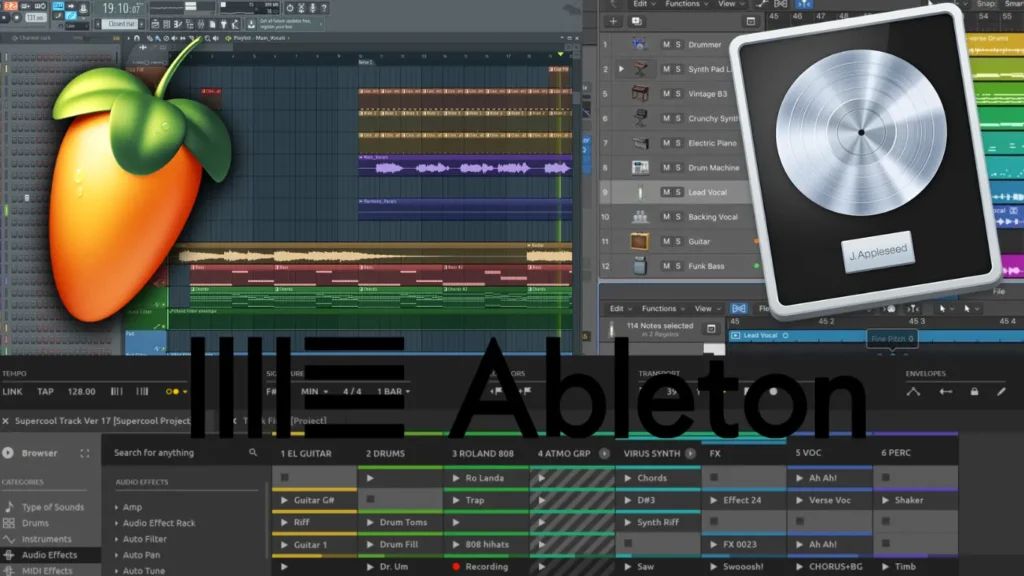
These DAWs provide the tools necessary for creating beats, melodies, mixing and master electronic music tracks. Additionally, producers often use VST plugins such as Serum, Native Instruments Suite, Sylenth and more to add effects to their music.
Popular artists such as The Chainsmokers, Calvin Harris and Zedd have had multiple hits on the Billboard dance charts, using their preferred tools to create music.
FL Studio
FL Studio is a popular DAW used by many artists to produce music. It has a wide range of features that make it ideal for creating music. Its intuitive interface allows users to easily create and edit MIDI sequences, record audio, mix tracks and apply effects. The software also includes a library of sound samples and presets that allow producers to customize their sound.
In addition to FL Studio, producers often use sound libraries to create their tracks. These tools allow them to manipulate the sounds they are working with in order to achieve the desired effect.
Ableton
Ableton is another popular DAW that has everything you need. It is well known for its intuitive workflow and powerful features, making it a great choice for creating electronic music.
Ableton has a wide range of tools that allow users to create beats, melodies and soundscapes easily. The software also includes a library of samples that can customize a track’s sound.
Ableton also has sound libraries that can manipulate sounds and create unique effects.
Logic Pro
Logic Pro X is a powerful DAW perfect for producing EDM. It has all the necessary tools and features to create professional-sounding music.
With its intuitive interface, it easy to get started with producing EDM on MAC. MIDI controllers, sound libraries and audio interfaces are essential for creating music.
To become more familiar with the plugins, it is important to understand the basics of VST or AU. Tutorials are a great way to learn how to use them effectively, and practice will help you become more comfortable with them. Experimenting with different settings and sounds can help create unique productions that stand out from the crowd.
You can easily produce high-quality music with Logic Pro’s powerful tools and features.
Sample packs
EDM Sample packs are an essential tool for any producer or musician looking to create music. They provide a wide range of sounds and loops that can be used to create unique tracks in any genre.
Samples typically include single drum hits, percussion, synth hits, and bass sounds. Loops are also included in sample packs, such as drum loops, top loops, bass loops, synth loops, and fx loops. Commercial sample packs can be purchased with a license to use the samples, which are usually royalty-free.
Popular sample manufacturers and online shops include Lucid Samples, Loopmasters, Modern Samples, Samplephonics, Wave Alchemy, Producerloops, Primeloops and more.
There are also many free sample resources available online such as Slooply and Looperman.
Many famous artists use samples in their music, so don’t be shy about it.
Audio Interface
An audio interface is an important piece of hardware for making music and providing input and output of audio signals to and from a computer. It is necessary for recording with a microphone, plugging in a guitar or bass direct, or connecting to studio monitors. It can also be called a Sound Card.
The quality audio interface is necessary for the best results when recording vocals with auto-tune.
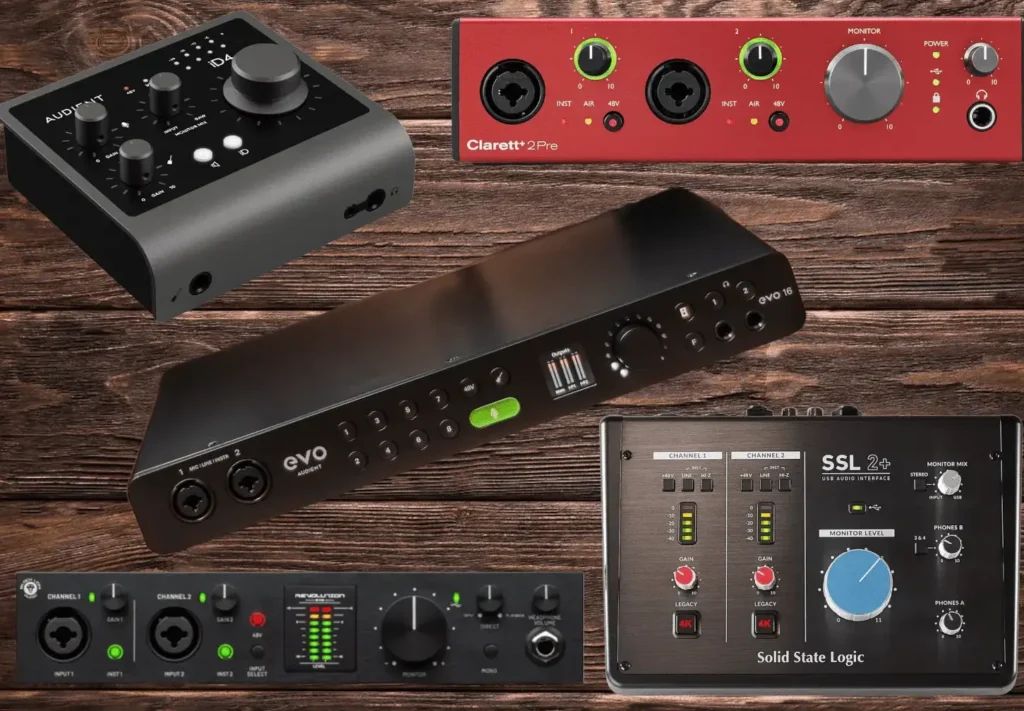
We recommend Focusrite Scarlett 4i4 3rd Gen. It is an affordable and compact audio interface that converts analog signals into digital ones that a computer can recognize. It has two mic preamps, four line inputs, four line outputs, one headphone output, MIDI I/O ports and USB connectivity. That makes it ideal for home studios as well as professional recording studios.
MIDI keyboard controller
Those controllers are a great way to add a layer of control and feel to your music production. They provide a different experience than playing with a computer keyboard, allowing you to play melodies and drum beats and control audio software more easily.
It comes in all shapes and sizes, so it’s important to research before buying one. There are many helpful resources online that can guide you through the process of choosing the right model for your home studio:
- Best MIDI Keyboards: An In-Depth Look At the Market
- The Best MIDI Keyboard Controllers for Home Music Studios
This is essential tool for any producer looking to quickly and efficiently create professional-sounding tracks.
Headphones and Microphone…
Pad controllers are available for creating melodic themes or beats respectively. At the same time, a good pair of headphones and studio monitor speakers are also necessary for accurate sound reproduction.
Studio Monitors should also be used in addition to studio headphones to ensure accurate mixes. A quality condenser microphone is needed to record vocals and auto-tune effects.
Knowledge Needed to Make Electronic Music
What would be the most optimal method learn how to make EDM? Music production requires a strong understanding of theory and concepts. Theory is the foundation of any EDM production, as it helps producers understand how to structure their songs and create melodies. Simply put, if you want to learn music production and don’t know how to begin, this guide will provide all the necessary information you require.
Arrangement and structure are important for creating full-length songs with a beginning, middle, and end. Mixing and mastering are essential for composing ideas and producing a quality track.
Become an producer requires hard work, dedication, and perseverance. Producers must constantly learn new techniques to stay up-to-date with the latest trends in the industry. It is important to be patient and forgiving of oneself as one develops their skills.
Music theory
It is an essential part of becoming a successful producer. It can give producers a creative edge and make them more versatile. Knowing that can help producers create better-sounding mixes and understand the fundamentals of sound engineering.
At the beginning of the article, we talked about the technical requirements for hardware, but aspiring producers should focus on mastering the music tools they have at their disposal instead of buying new equipment as a beginner.
Everyone knows that quality headphones are essential for picking up lower frequencies that regular speakers can’t reproduce, while an expensive MIDI Keyboard is great for creating melodies and chords intuitively. But it all only works with your knowledge and skills!
Learning theory takes time and dedication, but it’s worth it in the end, as it will open up new possibilities when producing electronic music. Useful Resources and Courses:
- Music Theory for Electronic Music Producers – Complete Guide
- 7 Interesting Music Theory Tips for EDM Producers
With the right knowledge and tools, aspiring producers can take their productions to the next level.
Structure and Arrangement
Knowing the fundamentals of structure and arrangement is vital to transforming a simple musical concept into a complete song. Due to its standardized format, electronic makes it manageable to grasp the fundamentals.
Here are good bits of advice about structure that you can use:
Perfect advices about track structure from AHEE
Once you have the basics down, you can start creating your track.
EDM Song Structure
It is an important element of the genre and differs from traditional pop music structures. EDM typically consists of four main structural elements:
Intro -> Breakdown -> Build Up -> Drop -> Outro
The Intro sets the pace for the song and introduces the listener to what’s coming next. Start with an intro section with a few bars of the drum loop, followed by 8 bars of just the chords. Then create a verse by adding in the melody from the chorus and a kick on every downbeat.
The Breakdown creates anticipation for the upcoming drop by slowly building up energy. The Build Up ramps up energy before finally leading into the drop, which is the most important element of an EDM song as it is the main hook and needs to make the listener want to move.
Different types of music will use these elements differently, but all EDM tracks can be broken down into basic elements. Visualizing a song’s structure becomes easier when understanding these basic elements.
Mixing
Mixing is an essential part of creating a good-sounding song. It involves taking individual elements and crafting them together to create a cohesive sound. 13 Tips for Mixing and Producing EDM by Izotope is a best way to learn the fundamentals of mixing. It covers both theory and practice, so it’s important to balance both when learning how to mix.
The four key elements of mixing music are levels, pan, effects, and automation. Levels refer to the volume of each track in relation to one another, while panning refers to where each track should be placed in the stereo field.
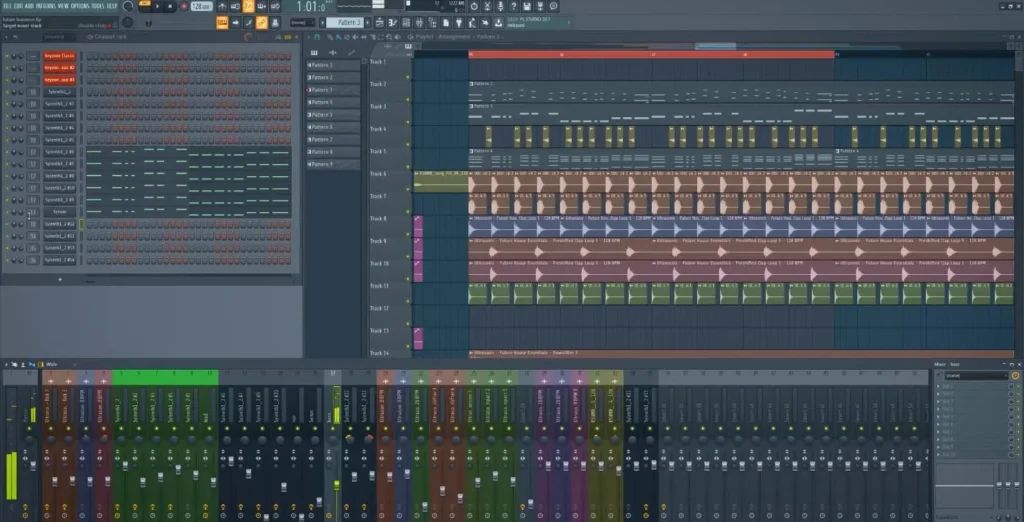
Effects add texture and depth to tracks, while automation allows you to adjust parameters over time. Mixing is like putting together a kitset bookshelf with screws and glue – it takes patience and skill but can be incredibly rewarding when done correctly!
Creating Your First EDM Track
Creating your first EDM track can be daunting, but with the right tools and knowledge, it can be an incredibly rewarding experience. You’ll need to familiarize yourself with a DAW to get started. Watching online video courses and tutorials is a great way to get comfortable using virtual instruments and effects. YouTube videos are also useful for tasks such as equalizing, compressing or adding reverb.
Creating an EDM song requires more than just technical know-how. It requires systematic knowledge of music production. Main tips:
- When creating your EDM beat, keep it simple and groovy – use kicks on the quarter notes, snares on every other quarter note, and some hi-hat and percussion to add character
- As a music producer, it is important to listen to your tracks on a variety of sound systems in order to ensure that they sound their best across different listening environments. By testing your music on different speakers, headphones, and car audio systems, you will be able to identify and address any issues that may arise, such as poor bass response or uneven frequency balance
Strategies for Expert EDM Music Producers
Producing EDM requires a strong understanding of the basics before advancing to more complex techniques.
To produce quality EDM tracks, it is important to have the right tools and knowledge at your disposal. Investing in quality sound libraries will help you create unique sounds that will set your productions apart from others. Whatever you want to become EDM DJ or sell your beats in the future, you must to learn advanced techniques.
Using an Equalizers
Using an EQ is a great way to shape the sound of your music:
- With an EQ, you can start using a high-pass filter to achieve clarity on kick drums or bass by cutting everything below 40-50 Hz. This will help make sure that the low end doesn’t get too muddy and cluttered;
- You can increase the low end of your mix by lifting the frequency around 80-100 Hz. If it becomes too “boomy” or “muddy”, turn down the range near 200-250 Hz;
- Try boosting the frequency range between 700-800 Hz to bring out more bass lines;
- Cutting 5 kHz can make sounds appear more distant, while boosting it will make percussive instruments stand out more in the mix;
- Finally, cutting between 6-8 kHz can reduce sibilance when mixing vocals and boosting above 10 kHz adds “air” to channels or mix.
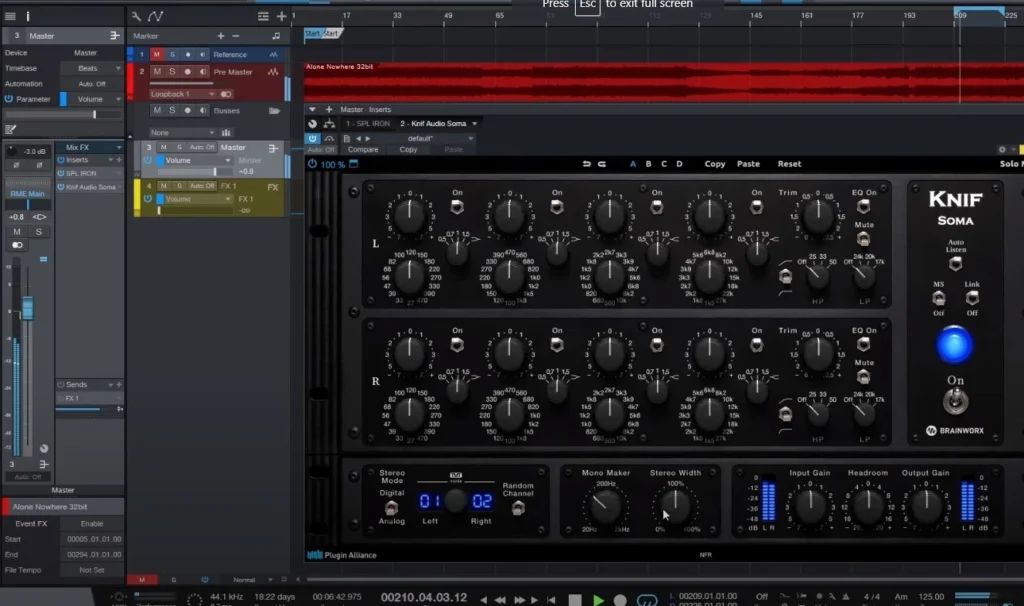
Making use of Compression
A compression is an essential tool in music production, both for individual tracks and during the mastering process. Compressors are used to limit the dynamic range of a track, allowing it to be heard more clearly in a mix. Attack and release time should be adjusted carefully to avoid losing transients or creating unwanted artifacts.
Excessive compression can also be used to achieve a popular effect, such as pumping or squashing sounds.
Guitarists often use compression pedals to limit the dynamic range of their playing, while side-chain compression is an essential technique, that will help you to learn how to make electronic music. To use side-chain compression, a compressor plugin must be loaded up on the bass track and set to react to an external sound source (e.g., kick drum).
This allows for more control over how much of the bass is heard when the kick is triggered, with settings adjusted to achieve the desired effect. Compression can also be applied to lead tracks and keys for a less drastic.
Implementing Spatial Effects
Spatial effects are a great way to add depth and texture to a mix. When used correctly, they can help create an immersive soundscape that transports the listener to another place. Spatial effects should be inserted at the end of an effect chain after all other processing.
Experimenting with the wet/dry function is a great way to determine how much reverb or delay should be added. Additionally, adjusting the tempo of a delay can lead to interesting rhythmic effects.
Mixing electronic music relies heavily on practical effects like EQ and compression, but reverb and delay can still be used for creative purposes. Effects in mixing are similar to those used in guitar pedalboards.
However, it’s important to remember that too much of either can muddy up the mix and make it difficult to hear individual elements. With careful experimentation and practice, spatial effects can be used effectively in any genre of music.
Developing advanced skills and revisiting concepts
Advanced learning is a critical part of music production, as it allows producers to hone their strengths and become more proficient in the areas they are most passionate about. It is important to focus on the areas you are strongest in, as music production is too diverse a field to become a master of everything.
Examples of advanced learning include delving into the physics side of sound design or interning at a studio to learn more about mixing. Learning the fundamentals of music, such as structure & arrangement and mixing, is essential. Complex concepts like dynamic EQ or multiple reverb should be avoided until a basic understanding has been gained.
Focus on what is relevant to the EDM genre, such as complex jazz theory for techno tracks. This will help producers create unique sounds and textures tailored specifically to their genre. Additionally, advanced learning can help producers develop new techniques and approaches for future projects. By taking the time to learn more about specific topics within music production, producers.
Remaking
Remaking music is an important part of learning from other artists. It involves taking a piece of music and re-creating it in your own style, using the same elements but with a different approach. This process forces you to listen attentively and try out new ideas as you experiment with different sounds and techniques. It encourages you to think about what you’re hearing and how it’s made, giving you a better understanding of the structure and composition of the original track.
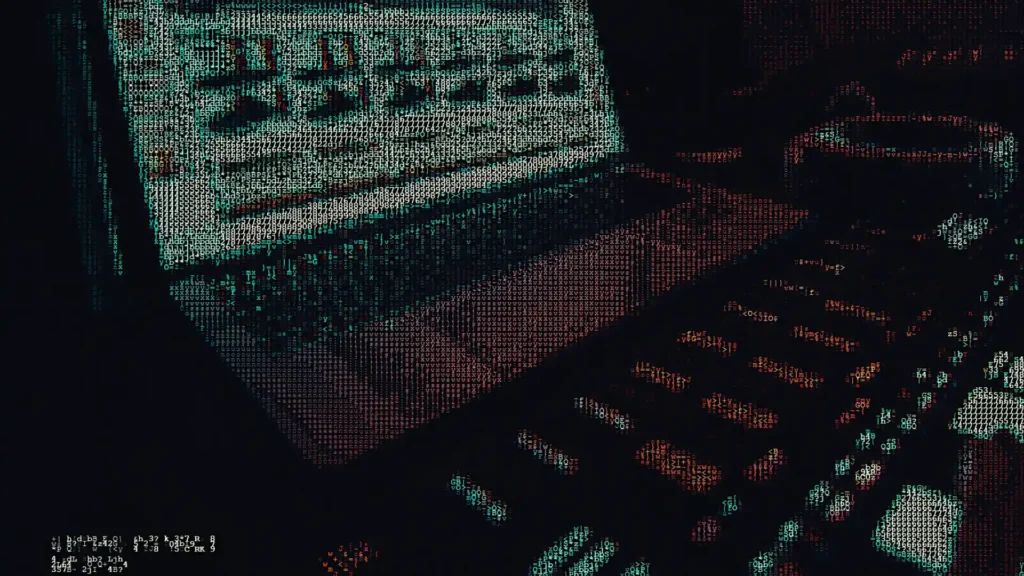
Remaking can be a great way to develop your own musical style. You can take inspiration from the original artist’s work while adding your own unique touches to create something entirely new.
It also allows you to practice your production skills as you learn how to manipulate sounds and mix them together creatively. Ultimately, remaking music helps us become more confident in our abilities as musicians, allowing us to express ourselves through our own interpretations of existing works.
Start produce EDM faster
The fastest road to success as a producer is to focus on key areas of improvement and utilize all steps outlined in the article. The perfection or masterpiece EDM can inhibit learning and progression, so it’s important to focus on finishing tracks as often as possible instead of creating masterpieces. Creating a large volume of work is the best way to refine your craft.
The key discipline here is to focus on quantity, as this will increase quality and faster learning. This approach allows producers to get feedback from their peers more frequently, leading them down the path of success much quicker than if they were trying to perfect every single track they make.
With this approach, producers can learn from their mistakes more quickly and become better at producing music faster than ever!
Programming Drums and Creating Rhythms
Drum programming is an essential part of creating dance music. It provides the foundation for making people move and groove on the dance floor. When programming drums, it is important to apply swing and groove to create a dynamic rhythm that will make people want to move.
A great way to start is by creating a four-on-the-floor kick pattern with a snare on the 2 and 4 beats. To add more texture, you can include an open hi-hat on the off beats and a crash at the start of each loop. This will give your track more energy and help keep people dancing.
Groove is also key when programming drums for dance music. By adding subtle variations in velocity, timing, and dynamics, you can create interesting rhythms that will keep people engaged and moving.
Experimenting with different drum sounds and patterns can help you find unique grooves to make your track stand out from the rest. With some practice, you can create exciting drum patterns that will have everyone dancing.
Chord Structure and Progressions
This is an important part of music composition, as they provide the harmonic content that gives a song its emotional impact.
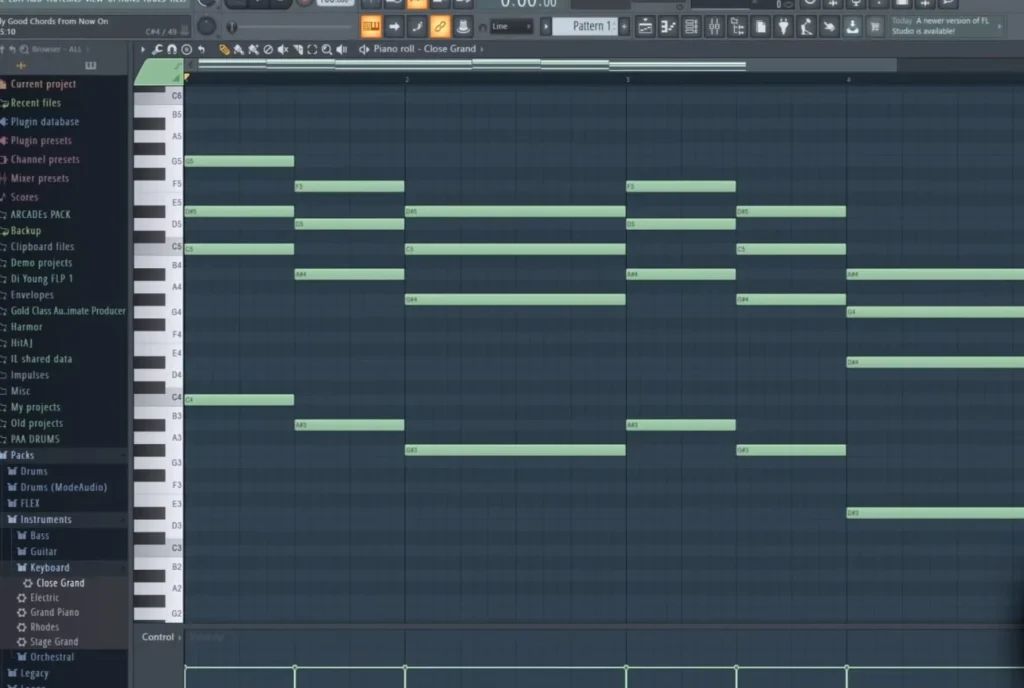
The combination of chords and drums provides movement to music while giving it an emotional depth that listeners can feel. Chords provide emotion, while drums give movement. Together they create something special that can take listeners on a journey through sound.
By understanding how chords work together and how to write effective chord progressions, composers can craft unique pieces of music that evoke powerful emotions from their audience.
For the first time, if you don’t skilled enough, you can use chord progression generators.
Melodic Development
Melodic development is an essential part of EDM production. A memorable and meaningful melody can distinguish between a good song and a great one. To develop melodic ideas, it can be helpful to break apart favorite songs to copy their melodies. Music theory is also important for melody writing as it helps musicians understand how music works and how to create tension and release in their songs.
With practice and dedication, any musician can become better at melodic development over time.
The key to successful melodic development is practice and experimentation. It’s important to experiment with different sounds and techniques until you find something that works for you.
Try playing around with different chord progressions or adding random notes or rhythms to your melody.
Conclusion
EDM is a form of artistic expression that brings people together and creates unforgettable memories. While it is true that many producers are in it for the money, they need to remember that true success and fulfillment come from doing what makes them happy.
I don’t care about having money. It’s about being happy, man. – Skrillex
You must find a balance between your passion for music and your desire for financial success. Ultimately, the key to producing great music is to always stay true to oneself and never lose sight of the joy that music can bring to both the artist and the audience.

